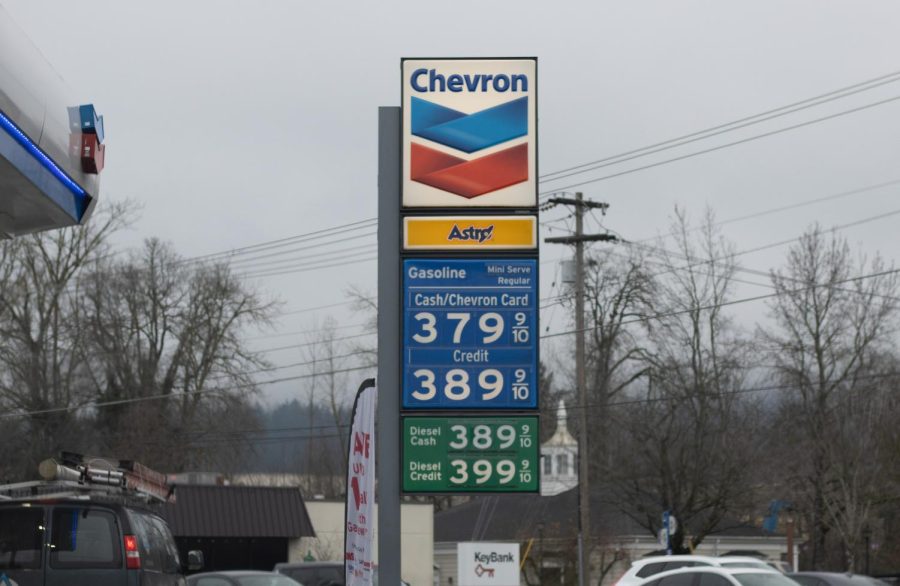US Inflation Has Caused Gas Prices To Shoot Up, and La Salle Students Have Felt the Difference
The average price of gas in the U.S. is predicted to hover around $4 per gallon by the end of the summer.
January 26, 2022
The United States inflation rate recently hit 7%, the highest it’s been since 1982. Because of this, gas prices are skyrocketing rapidly, affecting many students in the La Salle community.
Just like almost everything else in the news, the rise of inflation is tied to the COVID-19 pandemic.
The pandemic has caused supply and demand issues all over the country, so as demand for oil production and refining have increased, gas prices have increased as well.
The price of gas in the U.S. increased 49.6% in 2021, currently hovering around an average of $4 per gallon in Oregon.
The increase in gas prices is even more significant for high school students because unlike adults, they usually don’t have full time jobs to help support expenses, and gas is one required expense that many high schoolers have to cover themselves.
Although these rising gas prices are influential for high school students all over the country, some La Salle students are uniquely affected by higher gas rates, as they have to travel farther each day to get to school. Unlike students attending public schools, La Salle students can live all over the state, and are not limited to attending the public school closest to their home.
Junior Emelia Warta lives in Vancouver, WA, and commutes 30 to 45 minutes per trip to La Salle. This is “part of the reason as to why my family invested in an electric vehicle, so we didn’t have to pay as much for gas prices,” Warta said.
The rise in gas prices has even forced some students to change the way they budget their money, spending more on gas and less on other things. For example, “I go out to eat less,” said junior Aidan Cate, who lives in Beavercreek, OR.
Although the shift in gas prices has caused some students to make changes to the things they spend money on, other students who have this expense covered by their parents haven’t had their own finances impacted as heavily.
Junior Myra Keyes lives in Southwest Gresham and commutes 20 to 25 minutes per trip to La Salle. “I think if I paid for my own gas it would [affect me],” she said.
Warta said that the increase in gas prices hasn’t impacted how much she travels, because most of her travels are essential and not things that she could cut down on.
“It doesn’t really affect how often I drive because I have to get to school and I have to get to soccer practice no matter what, but it’s definitely more costly for our family,” Warta said.
Weekly U.S. All Grades All Formulations Retail Gasoline Prices Dollars per Gallon
Source: U.S. Energy Information Administration
The impact of the increase in gas prices can also vary significantly from student to student due to size, type, and age of the vehicle they drive, which most students don’t control.
Junior Mallorie Taylor — who lives in Troutdale, OR and commutes 30 minutes per trip to La Salle — said she drives a 1991 Ford Ranger, which gets around 18 miles per gallon.
“I normally try to take my mom’s car that gets better gas mileage,” said Taylor.
Cate says that because of his 45 minute commute to La Salle, as well as his gas mileage of 19 miles per gallon, he has to fill up his tank “once every two days.”
The rise in prices even has some students looking for alternative ways to get to and from La Salle, as well as other possible methods of transportation to take to their other frequented destinations.
“I still take the bus,” said junior Nick Miller, who lives in Southwest Portland and commutes 25 minutes to La Salle per trip.
As gas prices continue to rise, there’s no immediate relief or solution on the horizon, and the rise of inflation itself is on course to continue to be a prevalent issue across the country and in the La Salle community for the foreseeable future.





